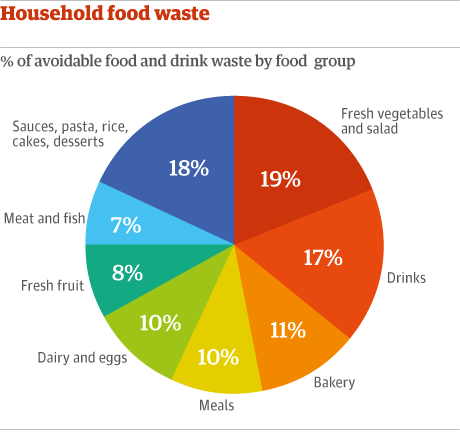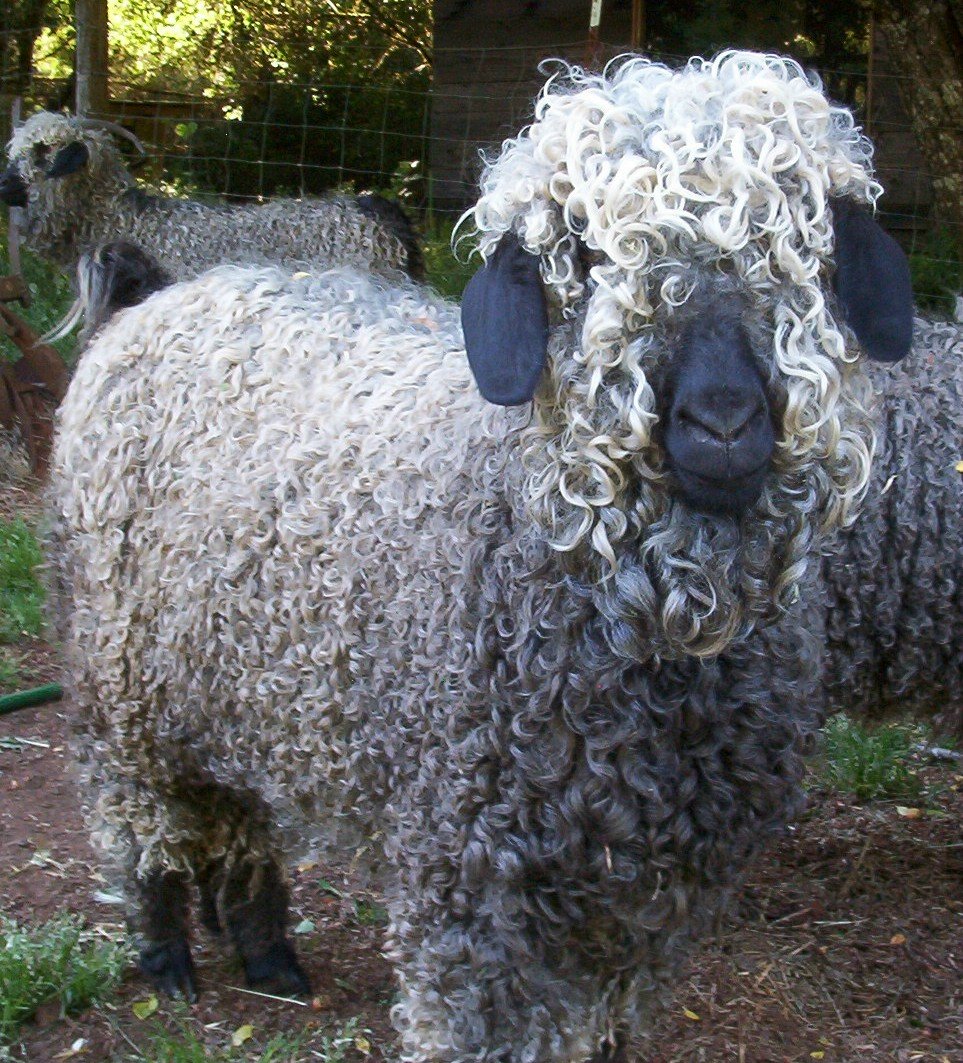 |
| This image is from The Guardian. |
A lot of my friends in the food world have been quite encouraging regarding this blog and have requested I do a series on food waste. The problem with that, as I see it, is that others have done a fabulous job of covering this already.
Global Food Losses and Food Waste (links to a PDF), a report from the Food and Agriculture Organization of the United Nations (FAO)
Technical Platform on the Measurement and Reduction of Food Loss and Waste (this is a fancy way of saying FAO is monitoring food waste worldwide and this is their web portal for it)
Food Waste in America from Feeding America
One-Third of Food Is Lost or Wasted: What Can Be Done from National Geographic
The Global Food Challenge Explained in 18 Graphics from the World Resources Institute - this one explains some of the related topics in global food security and why reducing food waste is necessary for sustaining a planet full of healthy people.
After reading all of that you might be wondering what some of the answers to food waste are and what you can do to help.
 |
| Image from the Environmental Commission of Ontario. Click the image to enlarge. Food waste has a number of causes from field waste, waste during packaging, loss in retail, loss during transportation, loss during preparation for food service, and loss at with consumers. |
Change in Habits
The first answer regarding what you, the average consumer, can do about it is simple in concept, but not necessarily simple in execution: don't buy more than you need. And follow this up with this: use what you buy.
Why is this so hard to follow? Plans change. Intentions change. Minds change. You might buy salad greens to last the next week or so with the intention of eating a side salad with every meal. Then, after a few days your plans change.
I'm not one to berate anyone about this because we all do it. But it's important to be aware of it. Make lists when you go grocery shopping and stick to them. Don't buy in bulk unless you're buying something with either a very long shelf life or it's something that you use in bulk.
Additionally, if you're buying something for a specific recipe, cook your recipe as soon as possible. Because plans and minds change it's easy to forget you've got those recipe ingredients in your refrigerator before they've begun to spoil.
I'm also going to suggest that you not buy pre-washed and bagged salad greens unless you plan on eating the entire bag the day you purchase it. Yes, they're really, really convenient, but they represent a tremendous amount of food waste. So much waste.
Change in Attitude
The way food is presented to us on a daily basis, the appearance and presentation of food makes all the difference between, say, a superb dining experience and perhaps just a "meh" kind of thing. We delight in perfect plating and presentation.
This is a cultural thing that we have learned from an early age and is continuously reinforced through "food porn" on television and in print media, as well as how food is presented at the grocery store, restaurants, sandwich shops, and farmstands. Everyone who sells food knows they have to present it in an appealing way if they want people to buy it.
What about the ugly foods? I grow peaches in the summer and can tell you that none of the ones I grow would make to a grocery store shelf. They're just not pretty. I'm told they're quite delicious (I don't eat peaches but grow them for others) though. It's not uncommon for ugly food to be discarded because it will not sell if presented to consumers.
Additionally, much market research has confirmed that consumers like to see shelves that are full of product. A nearly empty shelf does not instill consumer confidence and will result in a drop in sales. Therefore, instead of leaving the last of something out and not sell, some grocers will discard the end of a batch of product.
I challenge my readers to, instead, try some of the ugly food you find. Start with a single item that's either imperfect or towards the bottom of the bin. Does it taste the same? Were you able to use all or nearly all of it as you normal would have?
Change in Usage
This one is a cultural change and not one I see happening quickly or easily for home cooks. However I can see commercial kitchens and farm-to-table restaurants enacting this.
Kansha cooking is the concept of appreciating food by eliminating waste. The word literally means thanks and is personified by TEDxAustin alum Elizabeth Andoh. Her book Kansha Cooking (and the website) gives instructions for using things that we normally throw out, such as potato or carrot peels, in new an interesting ways.
I'm not advocating for vegan or Buddhist cooking here, nor am I getting any sort of affiliate link for promoting her book or anything (this blog still generates zero income), however the concept of wasting nothing is compelling. We already have farm-to-table restaurants, as well as those who specialize in offal and unusual cuts of meat. I see the kansha concept as an extension of that.
Home cooks who want to give this concept a shot can check out Andoh's book or a few recipes I found online:
Roasted Carrots with Carrot Top Pesto from Epicurious.
Candied Carrot Peels, also from Epicurious.
Roasted Potato Peels from The Kitchn.
Several Broccoli Stem recipes from the New York Times.
Change in Production, Storage, Distribution
This one is only conceptually accessible to the majority of home cooks. The agriculture industry is extremely adept at what it does. Producers have carefully calculated when to harvest a crop and all of the logistics that happen between farm and grocery store shelves. It's an impressive system with little margin for error.
There are a number of research groups in the US and abroad who are working to make changes to crops in order widen those margins for error. They're creating more shelf-stable crops, that are resistant to various diseases, and that can better survive shipping and storage. In addition to widening the US producers' margins for error, this has the added benefit of potentially increasing the range and distance of national and international trading partners. A product that spoils more slowly can be shipped further afield to larger markets. Additionally, greater shelf stability leads to a reduction in the number of items discarded because of spoilage.
Additional research groups are doing what they can to improve crops so that there's more consistency in appearance. This will lead to a reduction in the amount of food that is discarded simply because it doesn't look good. Learn about how the agricultural industry, farmers, producers, grocers, and scientists are working together to make this happen. Here are a few links to get you started:
USDA Innovations to Reduce Food Waste Help the Farmers’ Bounty Go Farther
Stop Food Waste from the European Commission
Creative Solutions for Ending School Food Waste from the USDA
Sustainable Management of Food from the EPA, which includes the Food Recovery Challenge
What governments, farmers, food businesses – and you – can do about food waste from FAO
So what's the too long; didn't read (TL;DR) version of all of this? It boils down to a few key points in how the average consumer can reduce food waste.
1. Change Your Habits - buy what you need, use what you buy
2. Change Your Attitude - it's okay to eat the ugly products
3. Change Your Usage - use all of the edible parts of what you buy
3. Change the Way You View Agricultural Production - producers, companies, farmers, ranchers, industry groups, and scientists are working hard to tackle some of the biggest challenges we all face. Increased shelf stability, decreased spoilage, increase resistance to disease all lead to a reduction in food waste.
Nothing will ever work if it feels like a chore, so find ways to make this fun. I encourage you all to try some of the recipes above, or to make up your own.
I leave you with this video from TEDxRedDeer in 2015. It explains how science and agriculture can work together to feed many more people, and I remind you that reducing your food waste is one part of the equation.
ETA: The Guardian just published an article on how to use your "food waste" that is also worth the read.




